
from all of us, 2023

from all of us, 2023
Satpreet Kahlon is a Punjab-born, Brooklyn-based artist whose expansive practice—spanning multimedia installations, sculpture, and community-rooted engagement—challenges dominant narratives around identity, memory, and belonging. Winner of the 2024 Foundwork Artist Prize, Kahlon draws from her lived experiences as a working-class immigrant and her Punjabi heritage, creating tactile, layered works that often blend discarded or everyday materials with natural elements like clay and soil. Her approach to form is instinctive and unbound, shaped by necessity and sustained by a belief that art can hold space for both personal vulnerability and ancestral knowledge.
She explores how objects, rituals, and archival fragments can collapse time—offering viewers a way to feel, rather than decode, complex stories of diaspora, grief, and joy.
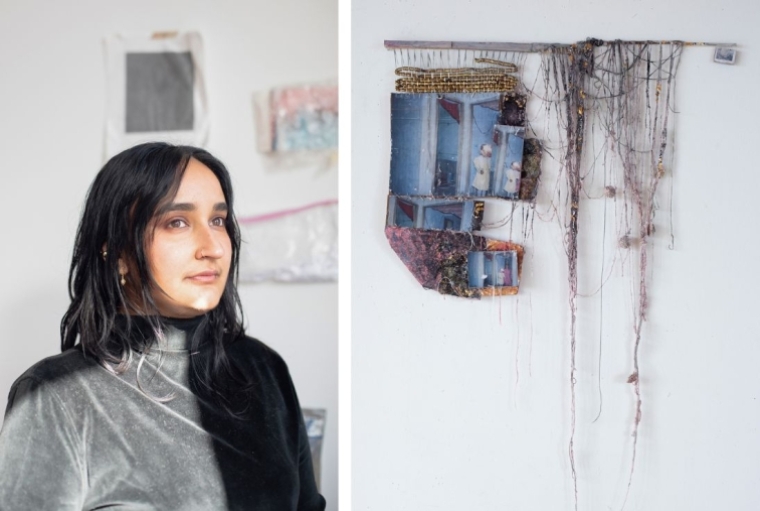
Satpreet Kahlon (left) | obscured, repeated, 2023 (right)
What drew you to mixed media, and how do you approach form so freely—almost as though you're unbound by it?
I think I came to art in a really unconventional way. Growing up, I didn’t take art lessons or anything like that. My family didn’t have a lot of money—my dad was a taxi driver, and my mom worked in a factory. So we couldn’t afford art supplies. I would just use whatever was around the house—usually things from the trash, honestly.
I started making sculptures early on with things like cardboard, aluminum foil, and old wrapping paper from parties. That’s how my creative intuition was formed—just working with what was available. At the time, I didn’t even think of it as art. It was just something I felt compelled to do.
When I got to college, I didn’t go in as an art major. But when I eventually did switch, I realized I wasn’t very interested in drawing or painting. I actually got two BFAs—one in ceramics and one in film photography. But after graduation, I couldn’t afford access to a ceramic studio or a darkroom. So again, it became a question of: What can I afford to use? And that mindset has really stayed with me.
I do feel unbound by form—and also by a lot of the rules of art. When I went to grad school at RISD (Rhode Island School of Design), I noticed how traditional it was. I taught undergrads there, and while they had many advantages—early exposure, strong networks, formal training—they also seemed to carry all these internalized rules about what art should be. I never had that, which means I never had to unlearn it either. What started as a disadvantage has become a strength.
Was there a moment when you realized you wanted to pursue art as a career?
I think I always kind of knew. My mom used to make us fill out these little books every year before school—'What do you want to be when you grow up?'—and I would always write artist or art teacher. I didn’t really know what that meant, or what an artist actually did, but the impulse was always there.
That said, it felt scary. My parents always emphasized the importance of a stable income like typical Punjabi parents. They wanted me to become a doctor or an engineer. My sister was studying to be a lawyer. I was the first person in my family to graduate from college, so it felt risky but I knew I had to do it.
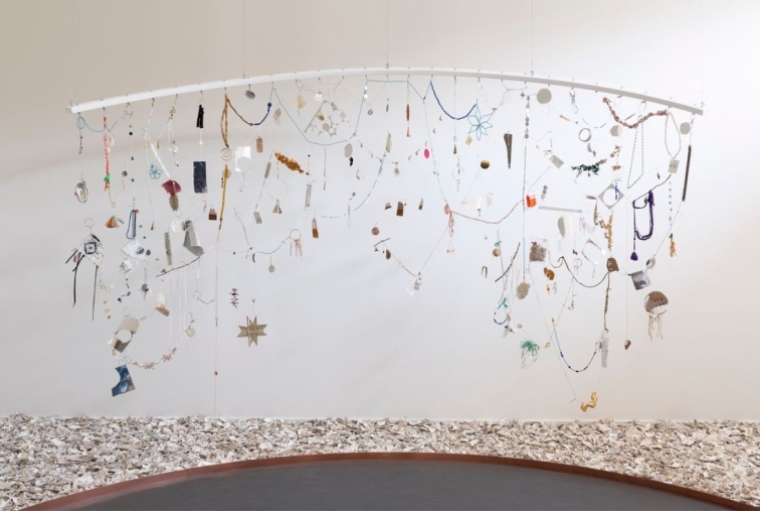
this was a densely wooded hill, 2022
Your work deals a lot with memory, which is why I was curious about your childhood. Why did you choose to explore memory and personal history through your art?
It wasn’t really a conscious decision. Around three years ago, I was diagnosed with complex PTSD, and I started going to intensive therapy. That process involved revisiting and processing a lot of fragmented memories.
Until then, my work had been political, but not personal. I realized I had been avoiding vulnerability—talking about gender, race, and class politics, but never revealing anything about myself. That was a form of self-protection. But therapy helped me confront my own story and experiences, especially from childhood.
As I worked through those memories, it just made sense to process them through art. That’s how I understand the world—through making. It was scary to be that vulnerable, but also incredibly rewarding.
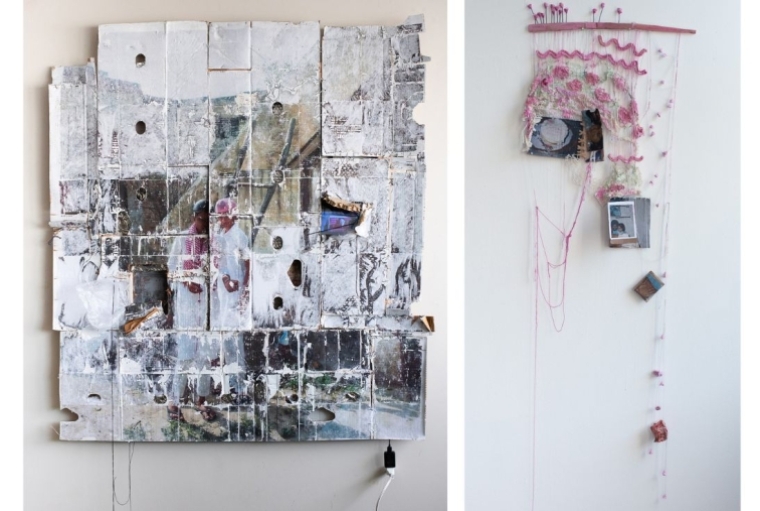
a return (of body to place, of gaze to gaze), 2022 (left) | the same cake, again, 2024 (right)
Since we’re talking about vulnerability, what do you hope people feel when they experience your work?
I’ve been thinking a lot about time travel. I don’t need viewers to fully understand my work—some of the imagery will resonate deeply with people who share a similar upbringing, and that’s okay. I used to think the role of art was to educate, but I don’t believe that anymore.
Now, I want people to feel a sense of time collapsing. I’ve been reading a lot about geologic time—how time travel might be available to us through memory, through ancestral knowledge. I think about how we can access those bodies of knowledge that have been sidelined or erased by imperialism. That’s why I often use audio and video—to create an immersive environment where time feels fluid, where the past, present, and future coexist.
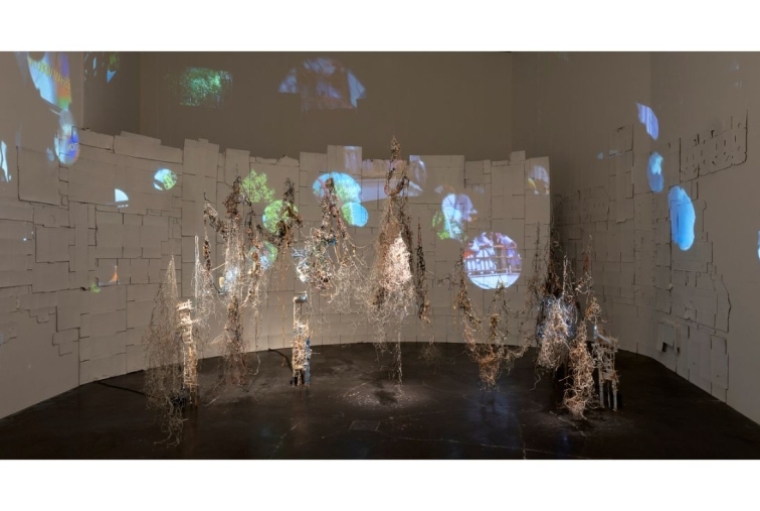
the inscrutable shape of longing, 2023
Tell me about your pieces like The Same Cake Again, they seem to inspired by certain incidents in your life?
The Same Cake Again is really personal. My favorite cake growing up was vanilla with strawberries and cream. I grew up in a small home with three generations under one roof—about 25 people in three rooms. It was tight.
Every weekend, there was some kind of celebration, usually with over a hundred people. And it was always the same cake—a strawberry cake from the grocery store. It became this symbol of celebration and family. We’d often combine birthdays, so I never had a birthday party just for me. My cousin's birthday was June 30th, and mine is June 6th, so we’d always celebrate on the 30th because you’re not supposed to celebrate early.
Looking back at photos, it’s hard to tell whose birthday it was—it was always the same cake, the same group of kids around it. That repetition, the circularity of it all, stuck with me. That cake represents more than a treat—it’s tied to memory, identity, and family mythology. It’s about how we performed happiness for the camera.
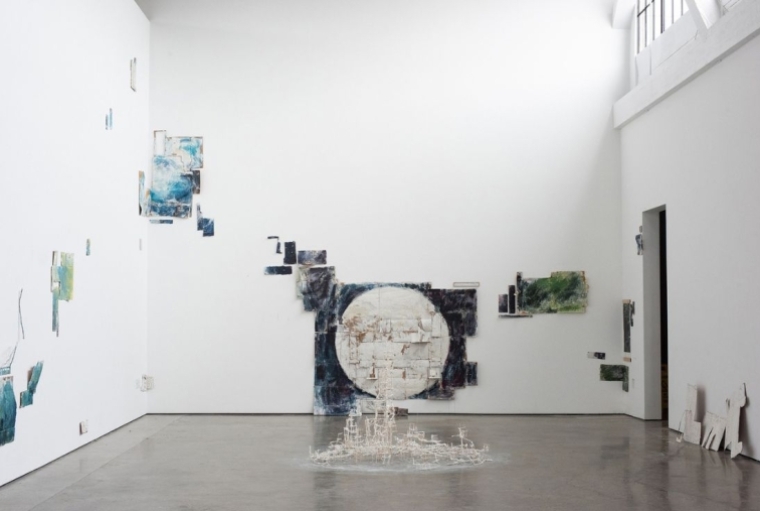
the space between (a promise), 2021
What does the future hold?
I have two really exciting exhibitions next year. One is a solo show at the Portland Institute of Contemporary Art—it’s a huge space, about 12,000 square feet. I’ve known the curator, Kristan Kennedy, for a long time. She’s been asking me to do a solo show for years, and I finally feel ready. We’re applying for funding, and I’ll be working on a scale I’ve never worked at before.
On the opposite end, I’m also doing a show at a gallery in central London called Indigo + Madder. It’s a commercial space that’s much smaller in scale, but what’s exciting is that they mostly work with South Asian women in sculpture. That kind of focus is rare and really meaningful to me.
So, I’m simultaneously creating massive work—like 50 x 30 feet—and tiny pieces that are maybe 10 x 12 inches. It’s a good challenge, and I’m excited for what’s ahead.
Words Paridhi Badgotri
Date 15.04.2025